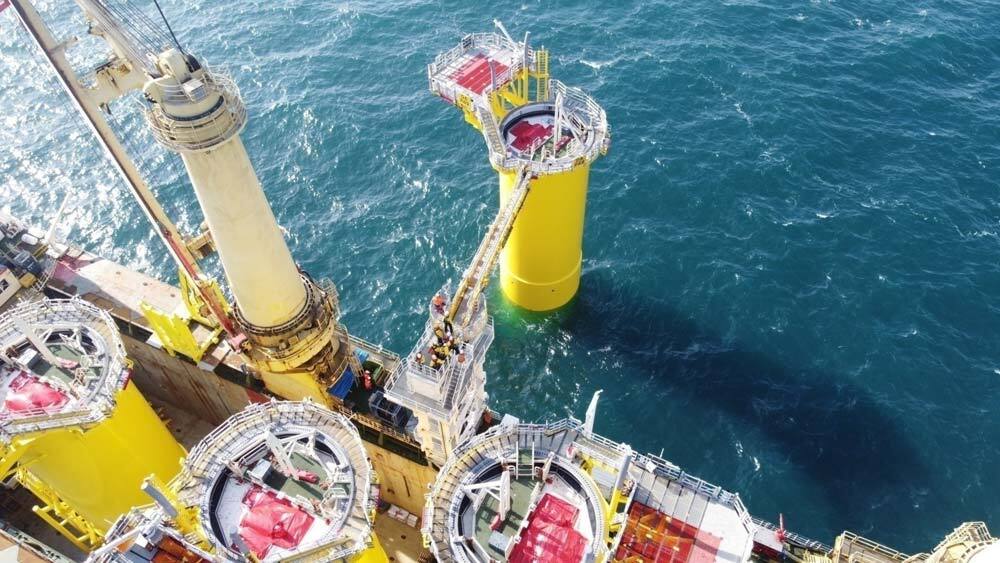
Image:Jumbo –
In a recent venture, Jumbo Maritime’s versatile heavy lift crane vessel, the ‘Fairplayer,’ embarked on a significant project in the North Sea. This summer campaign marked a milestone as transition pieces (TP’s) were installed for the British Doggerbank wind farm. While the vessel’s crew played a pivotal role, it’s worth noting that office engineers also took part in this offshore operation. Bas Milatz and Martijn Witvoet, marine engineers on board, share their insights into the challenges and learning experiences of working on the Fairplayer.
The Role of a Marine Engineer: Calculations and Coordination
As a marine engineer, the responsibilities extend to intricate calculations concerning ship motions and structures. This encompasses critical factors like ship stability assessments, estimating potential weather-related delays, and evaluating dynamic loads. These results serve as invaluable tools for informed decision-making throughout the project’s planning and execution phases.
Field Engineers: Bridging Gaps Between Crew and Client
Onboard, the field engineer assumes a pivotal role, acting as the liaison between the Jumbo offshore crew and the client. Given the unpredictable nature of such projects, adjustments to the initial engineering plan are often imperative. This demands not only the update of procedures but also ensuring their adherence by the entire crew. Hence, active participation in project tasks and providing support wherever necessary becomes paramount.

Bas Milatz: “Going offshore really helps you understand the challenges the crew face during the execution of a project. On board you see your own preparations being used, discussed, and get the chance to learn from it. One of the things I enjoy most is that you’re really part of the offshore crew, the responsibility that comes with it and the synergy required in the team. I experienced this firsthand during the Doggerbank project. During the first installation it was cold, raining and there were strong winds. We faced many challenges, both operational and technical, and I sometimes wondered if we would be able to finish the installation at all. Looking back, you could really see the process we went through that night, and the improvements with the next installations.
Martijn Witvoet: “On board, I joined the crew to assist in numerous installation procedures, ranging from operating bolting equipment to being up close with the lifting of the TP’s. Seeing the crew work together in efficient and creative ways taught me a lot about the practical side of offshore. Interesting discussions happened between the office and crew, a valuable experience when you have a theoretical background. I learned that good solutions are found when you get input from a variety of perspectives, and that your ideas on paper can turn out differently in practice. For instance, at the office I worked on structural seafastening designs. Seeing the crew work with these structures in real life gave me a good view on what can be improved. I definitely take those lessons with me to improve my work.”
Source:Jumbo

